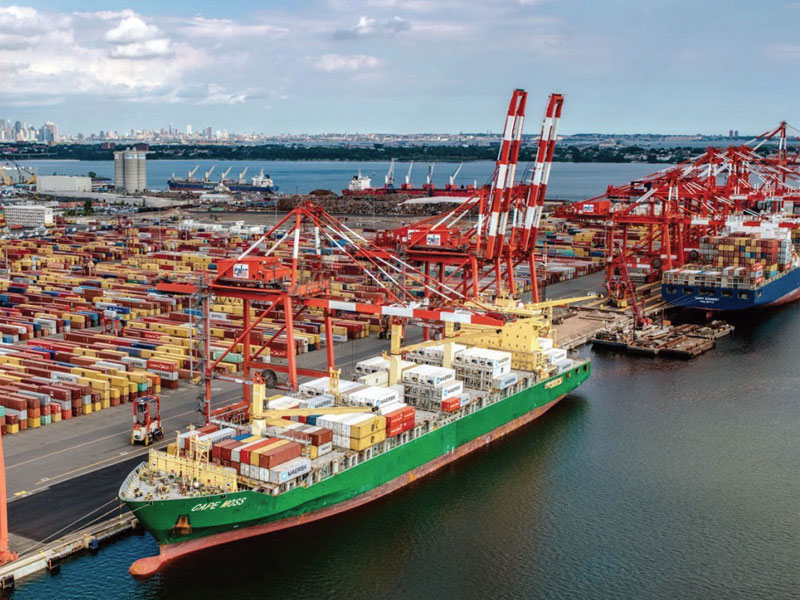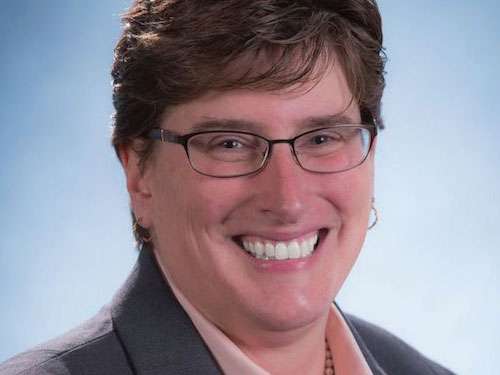NY/NJ Port community tackled issues as they arose

It’s a story that’s being replayed in supply chains and at ports across the globe, including the port of New York and New Jersey. After a few months of dramatic declines in cargo, during the early months of the COVID-19 pandemic, a resurgence beyond all expectations took place.
After seeing monthly declines of over 16%, the port of New York and New Jersey set a February cargo record this year, with increases of 6.8% over the previous record from February 2019. This follows on the heels of even more dramatic gains of 16% in January, 21% in December, 23% in November, and 13% in October, all compared to pre-COVID months in 2019.
March 2021 figures, which haven’t been made public, “remain very strong,” said Beth Rooney, the deputy port director, in an exclusive interview with the AJOT, “and we haven’t taken our foot off the pedal yet.” The port usually looks for yearly growth of between 3% and 3.5%, levels not likely to be seen again until 2022.
These levels of cargo growth are so dramatic that they represent “five years of growth in just six months,” said Rooney. In other words, the port is currently handling volumes that had been previously projected for 2026.
All of which has created problems for the port and its stakeholders. “It has stressed the supply chain at every node,” said Rooney. “We didn’t have five years to make infrastructure investments, equipment adjustments, or procedures to bring on additional personnel.”

Maximum Load Factors
As a result, “Everything is tight,” said Rooney. “Capacity is tight, dwell time across the gateway has doubled, containers are remaining on the terminal longer, and they’re sitting on chassis on the street longer.”
Ocean carriers and shippers are having difficulty finding empty containers at points of origin and it’s become harder getting space on ships. “Ships are leaving their origins at 100% load factors, so they are discharging larger volumes of cargo at the port,” said Rooney. “The increase in larger ship activity at the port during 2020 was significant.” Last year, 28% of vessels handled at the port were over 13,000 TEUs, up 4% over 2019.
Meanwhile, warehouses are still operating under COVID manning procedures. Crews are smaller, so loading and unloading take that much longer. “It’s taking longer for cargo to get off the terminal and longer to get into warehouses,” said Rooney. “Boxes are sitting on chassis in warehouse parking lots and the truckers’ storage yards.”
The Port Authority of New York and New Jersey, and its stakeholders have taken measures to address these issues, and, according to Rooney, they are being handled better at NYNJ than in some other places. “We attribute this to the Council on Port Performance,” a public-private body convened to address challenges faced by the port community, said Rooney. “We didn’t have to put a new forum together to understand how we were going to deal with this activity.”
Once COVID hit, the council began meeting weekly, since dialed back to every other week. “Every sector of the supply chain has been working together to identify issues,” said Rooney.
The council understood, for example, that once retail stores started closing, cargo would start piling up and warehouse space would run low. “So we identified every square inch of warehousing space and open storage land available and made marriages between those who needed and those who had,” said Rooney. “That helped cargo flowing.”
Smooth Sailing
NYNJ hasn’t had more than two vessels sitting at anchor at any one time during the pandemic, according to Rooney, a phenomenon she attributes to the coordination facilitated by the port authority among terminal operators, labor, chassis providers, and others. By contrast, at the ports of Los Angeles and Long Beach, there were 24 container vessels reportedly at anchor awaiting berth in mid-March, with an average wait time of over a week.
The good news for the future is that the current cargo volumes will eventually level off as demand for furniture, appliances, and home office and gym equipment return to normal. “There won’t be a new group of stay-at-home people,” said Rooney. “Everyone who was building home offices and classrooms, who were rebuilding their kitchens, or furnishing their new suburban homes have already made their investments.”
As the port resumes operating with expectations of healthy, but not overwhelming, cargo growth, the Port Master Plan, a 30-year roadmap for land-use and infrastructure development projects, still guides planning activities. A three-year study is currently underway with the U.S. Army Corps of Engineers on the further deepening of shipping channels so the port can accommodate larger vessels.
“That study will provide a decision point about where additional capacity needs to be established,” said Rooney. Port Jersey in Bayonne, the southern peninsula of Port Newark, 100 acres of undeveloped land in Elizabeth, and 60 or so acres at Port Ivory in Staten Island are among the candidates for expansion sites.
Later this year, the port authority expects to release a contract bid document for the last of the planned major port roadway enhancements. “At the same time,” said Rooney, “terminal operators continue to build out their equipment capabilities and are making additional optimization enhancements.”
There is also talk of increasing the port workforce and to replace an aging labor pool. To that end, the port authority developed an initiative with half a dozen regional high schools to develop curricula on supply chains, logistics, and maritime port operations. “We’re trying to get young people excited at their early ages,” said Rooney. “Particularly in out host communities, which are largely disadvantaged, we want to show them that there are plenty of opportunities for long-term careers other than enlisting in the military or working in retail.”
There is one caveat, however, lurking in this port success story. According to Rooney, shippers are currently both restocking and stockpiling inventory “for just in case.” The implication? Rooney explained: “There’s not a lot of confidence that COVID is over and that there is not going to be another global shutdown.”





